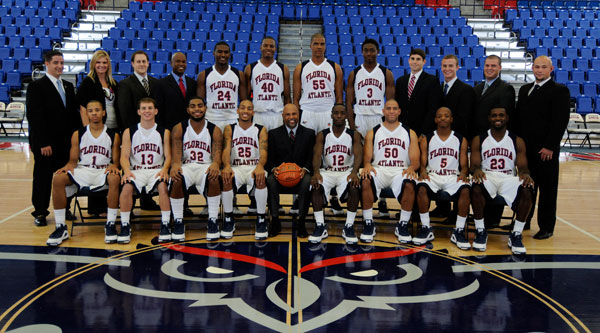
How to Incorporate Team Bonding Activities: Developing a Healthy Culture
Building a cohesive and unified basketball team extends beyond the X’s and O’s of the game. Effective team bonding activities are essential for fostering trust, improving communication, and creating a positive team culture.
This article explores strategies for incorporating team bonding activities into your basketball program to enhance team dynamics and performance.

1. Understand the Importance of Team Bonding
Team bonding activities play a crucial role in developing a strong team culture. Understanding their significance helps you choose the right activities and implement them effectively.
Enhances Communication
Bonding activities improve communication among team members, leading to better on-court coordination and understanding. When players engage in activities outside of regular practice, they learn to express themselves, listen actively, and work collaboratively. This enhanced communication translates into more effective teamwork during games.
Builds Trust
Engaging in activities together helps players develop trust in each other, which is essential for teamwork and collaboration during games. Trust is built when players see each other in different contexts, allowing them to appreciate each other’s strengths and vulnerabilities. A team that trusts one another is more likely to take risks, share the ball, and support each other under pressure.
Boosts Morale
Fun and engaging activities can increase team morale and motivation, contributing to a positive and productive team environment. When players enjoy their time together, they are more likely to stay committed to the team and its goals. High morale can lead to improved performance, both individually and collectively.

2. Select Appropriate Team Bonding Activities
Choosing activities that suit your team’s age, interests, and goals ensures they are engaging and effective.
Outdoor Activities
Outdoor activities such as hiking, obstacle courses, or team sports can build teamwork and camaraderie. Engaging in physical activities in a relaxed setting encourages players to connect on a personal level. Outdoor environments often reduce stress and promote a sense of adventure, allowing players to bond naturally.
Indoor Activities
Consider activities like team-building games, escape rooms, or cooking classes. These activities offer opportunities for teamwork in a different setting and can be especially useful during inclement weather. Indoor activities often challenge teams to solve problems together, fostering collaboration and critical thinking.
Community Service
Organizing community service projects can strengthen team unity while giving back to the community. Activities like charity events or volunteering not only build a sense of shared purpose but also promote empathy and social responsibility. When players work together for a cause greater than themselves, it reinforces their connection to one another and the community.
3. Integrate Team Bonding into Regular Practice
Incorporating team bonding activities into regular practice sessions helps integrate these experiences with your team’s daily routine.
Warm-Up Games
Start practices with warm-up games that focus on team interaction and fun. Activities like relay races or light-hearted competitive drills that require cooperation set a positive tone for the practice. These games can also serve as icebreakers, helping players relax and engage with one another before diving into more intensive drills.
Team Challenges
Introduce challenges or problem-solving activities that require the team to work together to achieve a goal. For instance, you can set up team-building exercises that involve strategizing and working together to solve puzzles. Such challenges encourage players to communicate, delegate tasks, and utilize each other’s strengths effectively.
Post-Practice Activities
Dedicate time at the end of practices for bonding activities. This can be a casual team meeting, a review session that encourages sharing thoughts, or a team-building exercise. Ending practice on a high note reinforces the day’s lessons and strengthens relationships among players. Consider incorporating a “highlight of the day” where players share positive moments or achievements from practice.

4. Encourage Player-Led Initiatives
Empowering players to take the lead in organizing bonding activities can increase their investment in the team.
Foster Leadership
Encourage players to propose and lead their own team bonding activities. This not only builds leadership skills but also allows players to take ownership of their team culture. When players feel responsible for creating a positive environment, they are more likely to contribute positively to it.
Create Committees
Establish committees that focus on team bonding and morale. This gives players a platform to voice their ideas and work collaboratively to plan events. Whether it’s planning a team dinner, a fun outing, or community service, these committees help instill a sense of belonging and commitment among team members.
Regular Check-Ins
Have regular check-ins with players to discuss what activities they enjoy and what they would like to do in the future. Open communication fosters a collaborative environment and ensures that activities remain relevant and enjoyable for everyone. When players feel heard, they are more likely to engage fully in the bonding experiences.
5. Measure the Impact of Team Bonding
Evaluating the effectiveness of bonding activities helps ensure they are meeting their intended goals.
Gather Feedback
After each bonding activity, gather feedback from players. This can be done through informal discussions or anonymous surveys. Ask players what they enjoyed, what they learned, and how they felt about the experience. Understanding player perspectives helps refine future activities.
Observe Team Dynamics
Pay attention to how team dynamics change over time. Are players more willing to communicate on the court? Is there an increase in teamwork during practices and games? Observing these changes can provide insight into the effectiveness of your bonding efforts.
Track Performance Metrics
While team bonding may not directly correlate with win-loss records, monitoring performance metrics—such as assists, turnovers, and overall team cohesion—can help assess the impact of bonding activities on team performance. Look for improvements in these areas as evidence that bonding is contributing positively to the team’s overall success.
How to Incorporate Team Bonding Activities Conclusion:
Incorporating team bonding activities into your basketball program is an essential strategy for building a cohesive, unified team.
By understanding the importance of bonding, selecting appropriate activities, integrating them into regular practices, encouraging player-led initiatives, and measuring their impact, you can create an environment where players thrive both individually and collectively.
A strong team culture fosters trust, communication, and commitment, ultimately leading to enhanced performance on the court.



